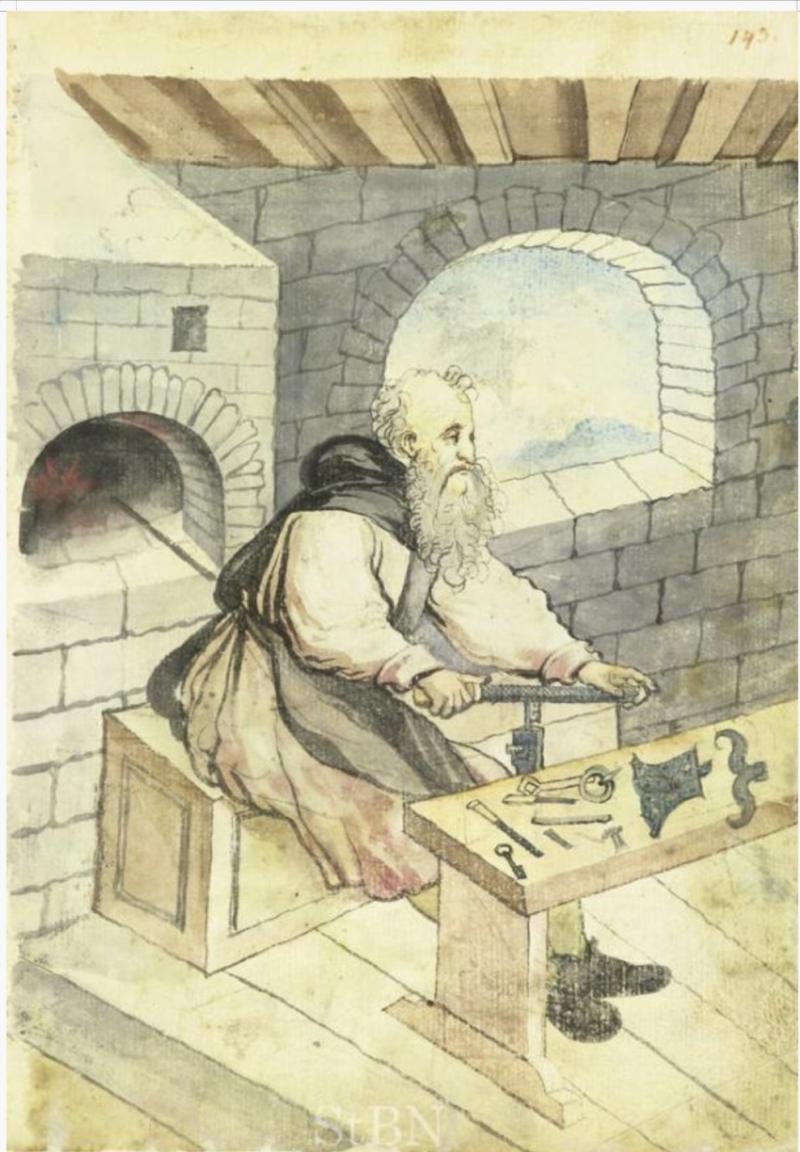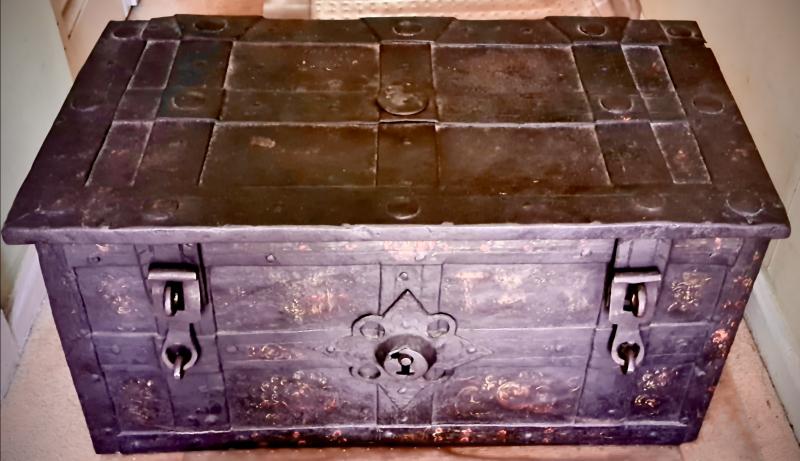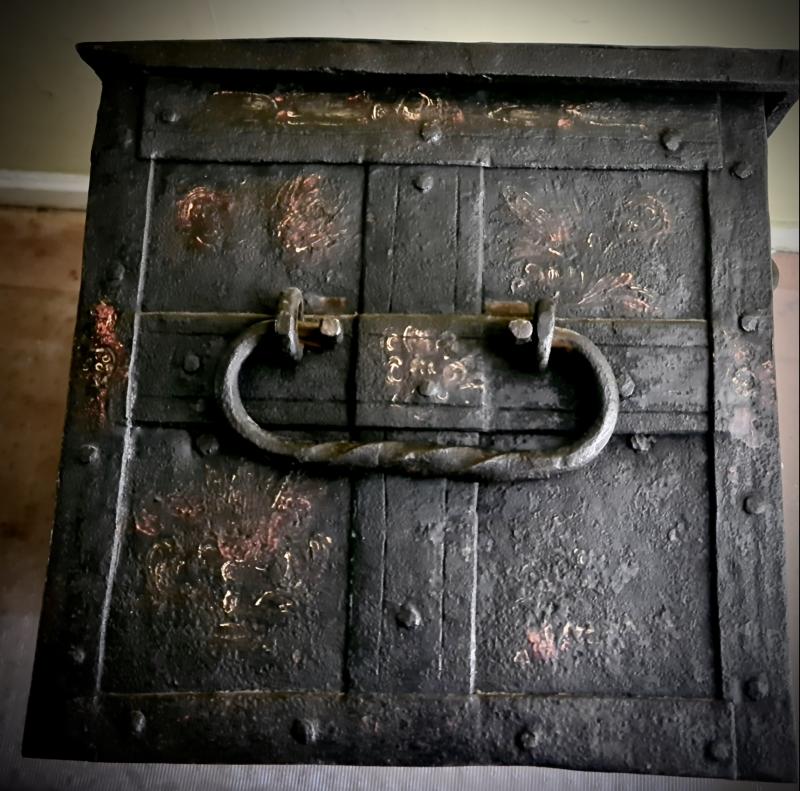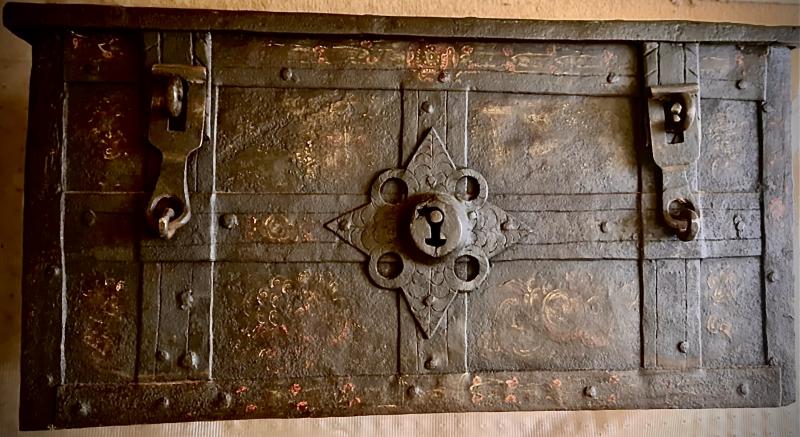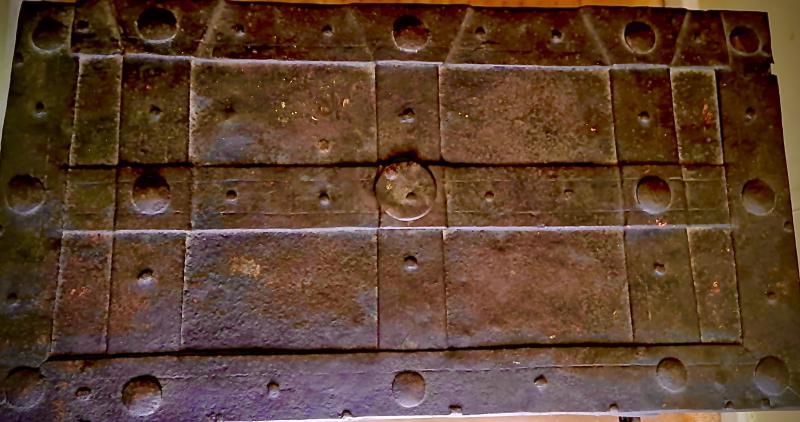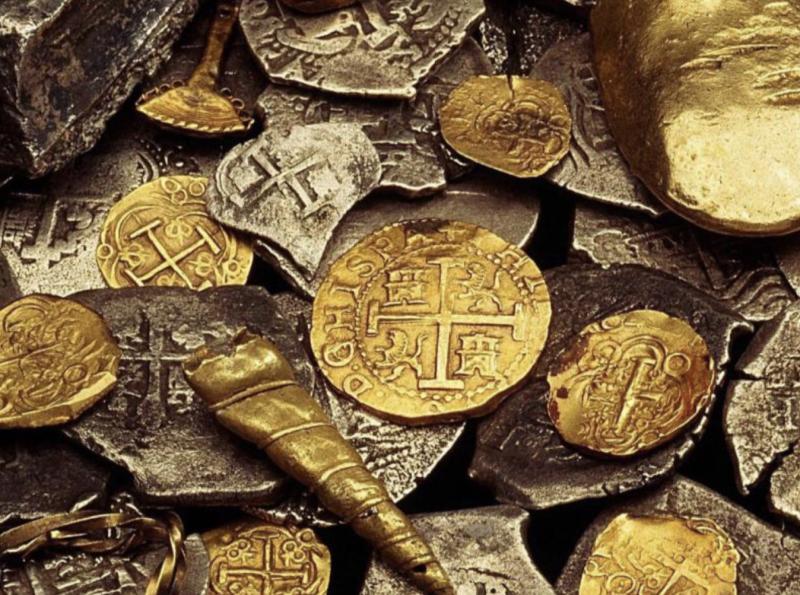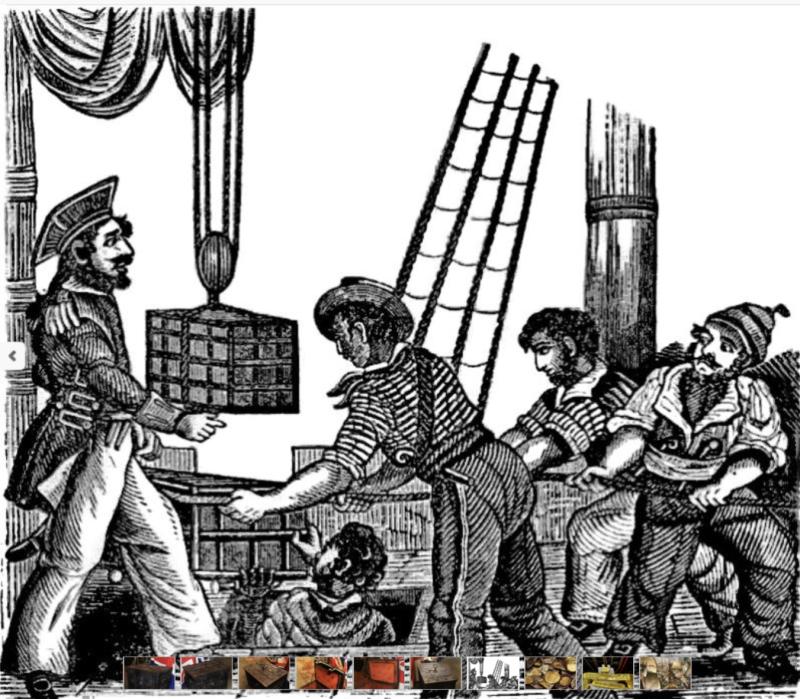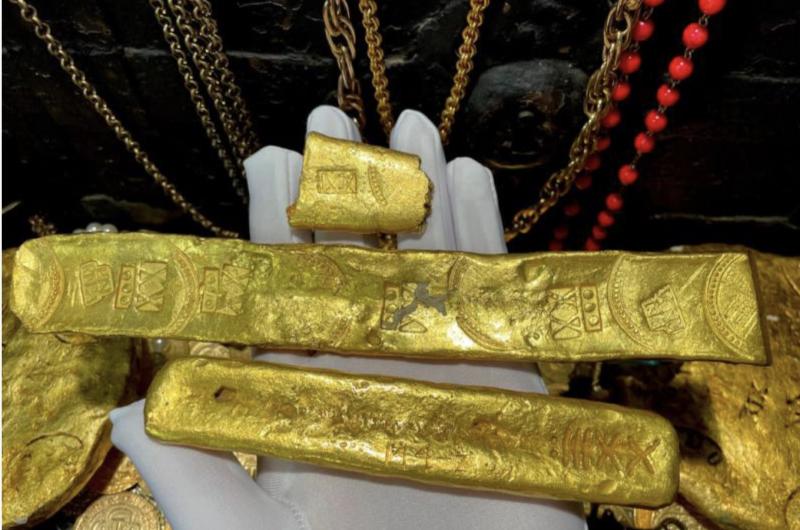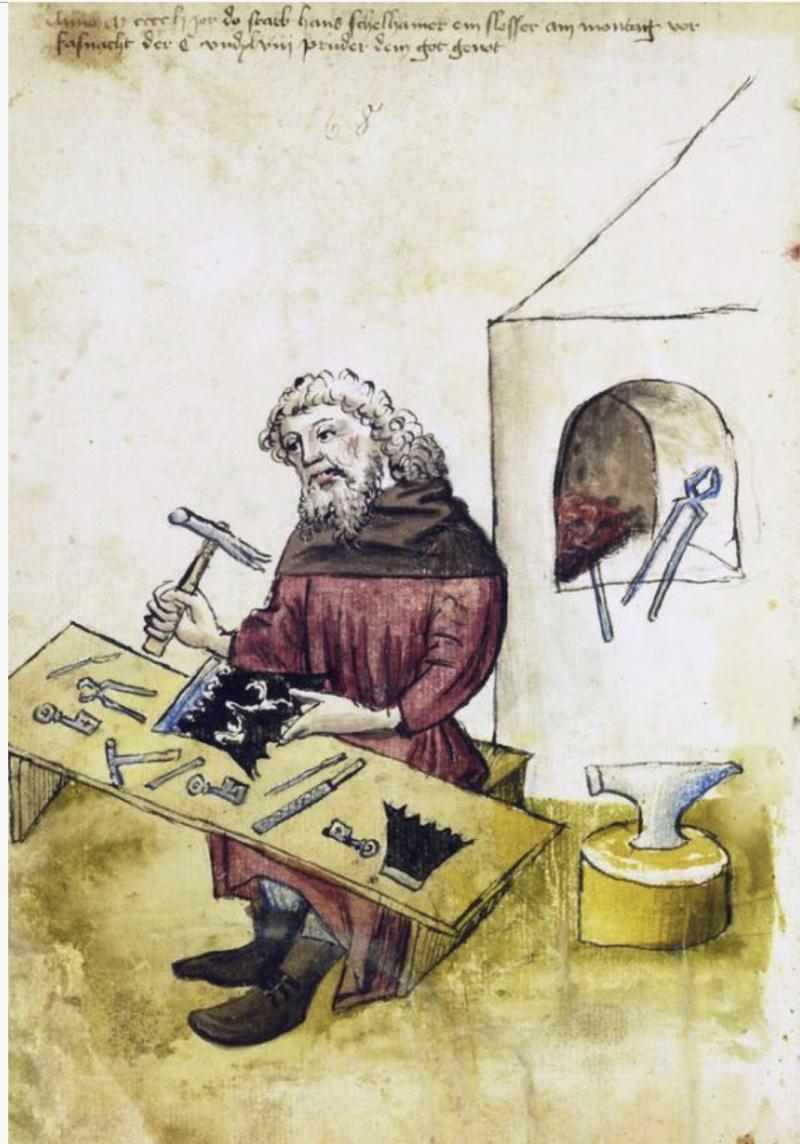An Exceptional And Rare, Late-Renaissance, Tudor Period 1500's to Early 1600's, Nuremberg, Iron, Strongbox or Ship's Treasure Chest, With its Naive Painted Panels. Used Aboard Galleons To Store The Ship's Bullion or Treasure
This fabulous example treasure chest bears a painted English Tudor Rose of Queen Elizabeth Ist on the front, which may indicate it was used by the privateers to relieved the Spanish of their looted gold from the Mayans and Incas.
One of two beautiful examples we just acquired.
A similar example, also decorated with very similar flowers, is in the Victoria and Albert Museum Collection.
Also known as in some quarters as a Pirate's Treasure Chest, for when the pirates of the King James and Queen Anne period captured ships, their victim's ship's gold and treasure were in chests exactly such as this, and then, they were transferred by block and tackle to the pirate's ship. {see an antique print of Captain Avery loading treasure into his ship's hold in the gallery}. It could have been exactly such chests, containing their stolen booty, including jewels, treasure, gold doubloons etc., as was often buried by the pirates in the deserted Caribbean Islands, such as was beautifully described in Robert Louis Stevenson's Treasure Island, and as was also well known through frequent tales of pirate lore.
Although made primarily in southern Germany during the 16th and 17th century, especially the Nuremburg region, these boxes were later identified in the Georgian period to be Spanish treasure chests, and were henceforth called Armada chests from the 19th century onwards. Some were indeed for the use of ship's captains at sea, and would have been bolted to the deck of the owner's or captain’s cabin.
During the sixteenth and seventeenth century money chests were wrought in sheet iron and reinforced with intersecting strips and fittings made of wrought iron. In the fifteenth and sixteenth centuries, a host of cities in southern Germany, Austria and Switzerland were renowned for their craftsmanship, especially Augsburg and Nuremberg. The shops were usually old family businesses in which younger generations were trained by their elders. They became extremely skilled blacksmiths, along with equally skilled colleagues in specialities such as sheet metalworking, etching, hammered inlay, steel-plate engraving, painting and rustproofing.
By the dawn of the Renaissance they had already achieved a strong tradition of craftsmanship and a dominant position in Europe. Forging production in certain cities focused mainly on steel and iron armor, as well as equipment for entire armies of foot soldiers, cavalry, officers and horses. Blacksmiths produced all types of small arms for the era, along with accessories, swords, rapiers, lances, helmets, breastplates, and armour.
Armada chests and money boxes were in demand far beyond the borders of the German states and were used to hold taxes, tariffs, and soldiers’ wages, jewelry, coin and bullion of nobles as well as treasure taken by pirates.This chest is in great condition with beautiful and very rare naïve painted panels. Locked and without key.
Picture in the gallery of an 1837 woodcut from The Pirates Own Book by Charles Ellms depicting Henry Every receiving three chests of treasure on board his ship, the Fancy. Also original pictures of medieval iron chest and locksmiths, and examples of the gold bullion coin and treasure as would be contained in the chest, For information only.
As it is locked one might like to speculate, with faint hope, it might still contain its booty of emeralds, rubies, pearls and gold coin, but we must point out, it is somewhat unlikely. However, stretching the Schrödinger's cat formulation and paradox, to its extreme degree, whilst locked, it may at the same time be full of millions in treasure, yet also, be empty, and if one doesn’t attempt to try to open it, to see if it does, or indeed doesn’t contain treasure, one will never know for certain which it might be. Thus, Schrödinger's paradox or quantum superposition remains intact!
Code: 25289
4750.00 GBP

